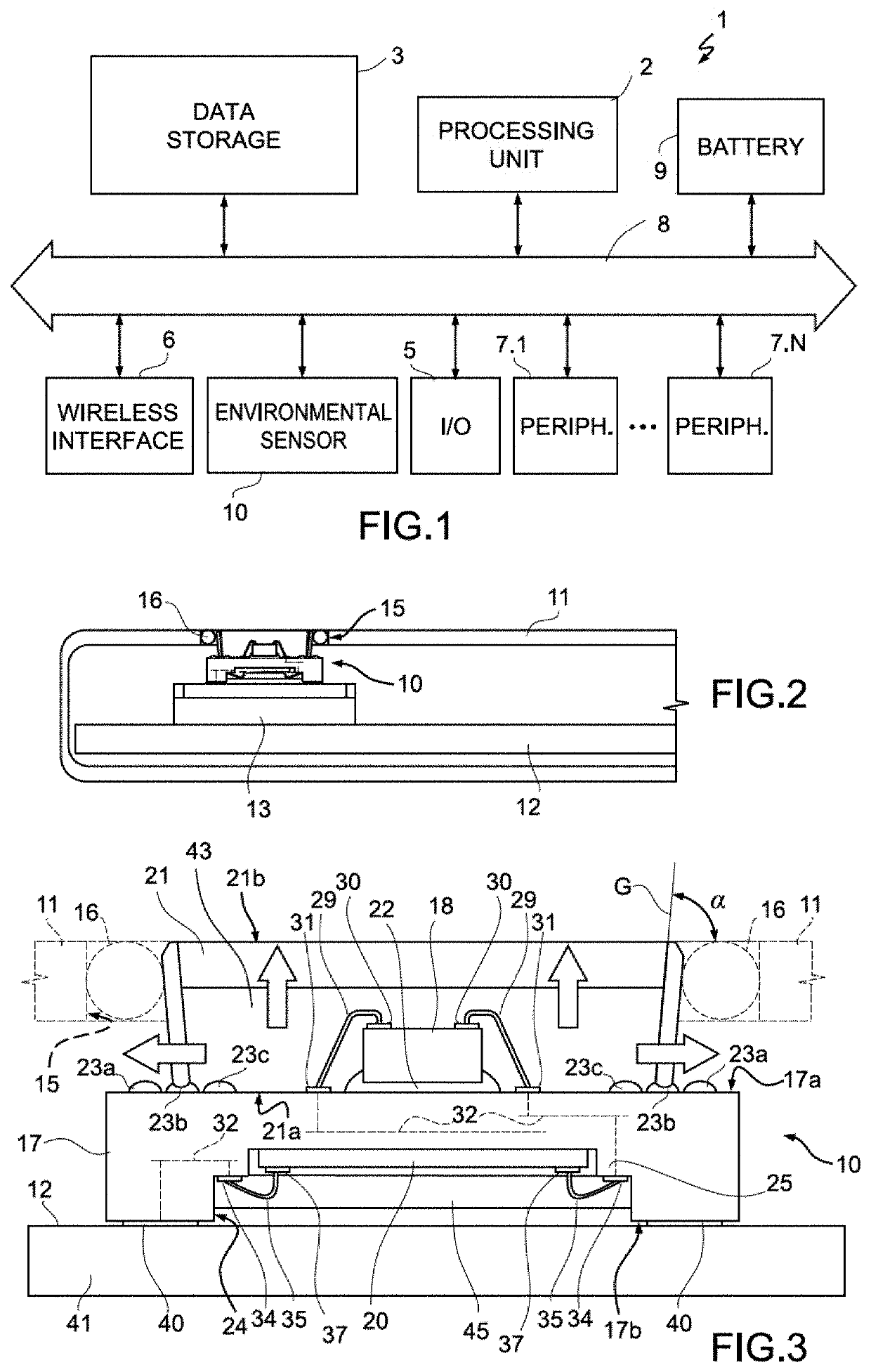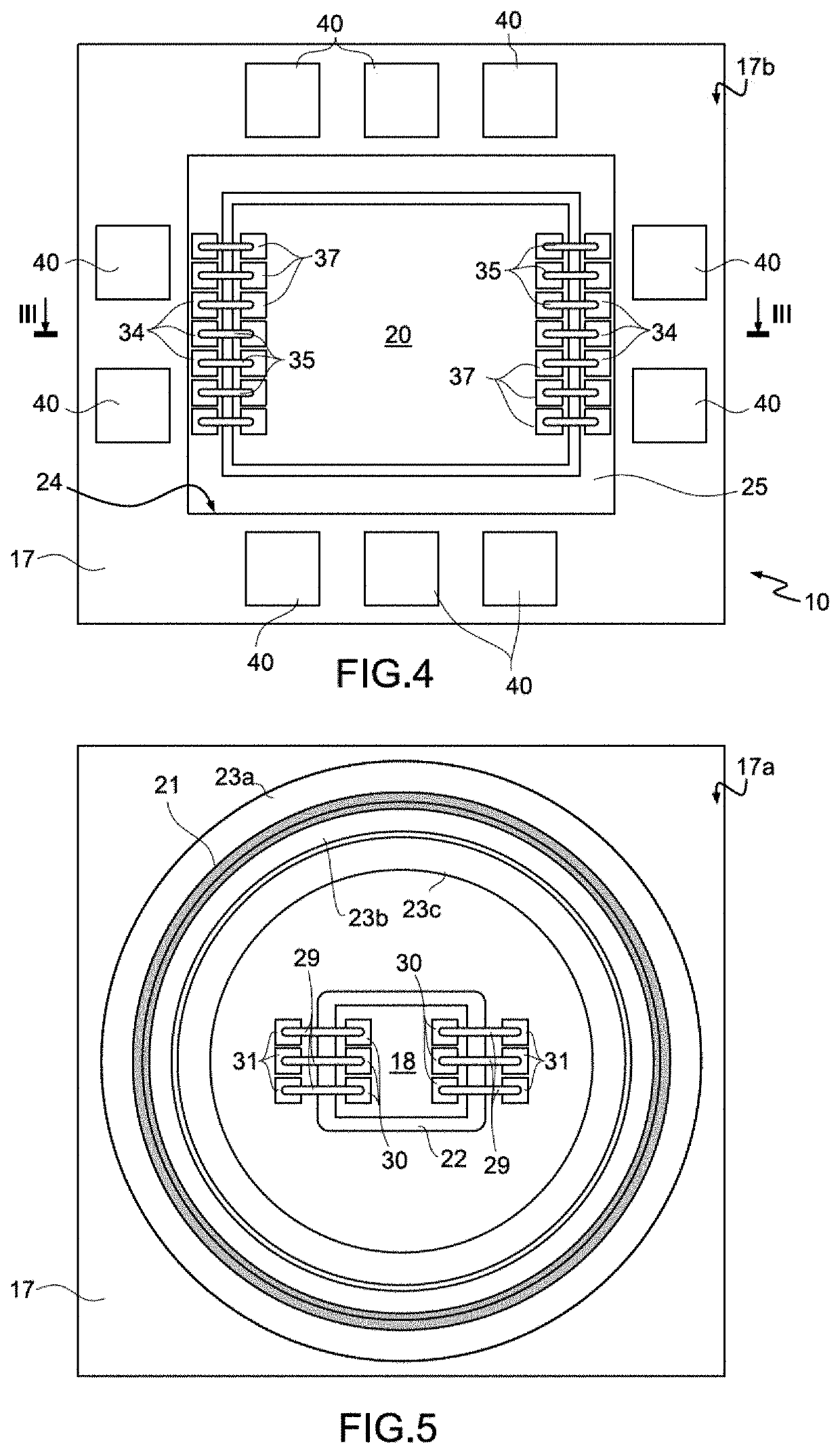Packaged environmental sensor
a sensor and environmental technology, applied in the direction of fluid speed measurement, instruments, forming microstructure systems, etc., can solve the problems of environmental sensors being exposed to aggressive agents, task is rendered problematic, and solution, however, presents limits
- Summary
- Abstract
- Description
- Claims
- Application Information
AI Technical Summary
Benefits of technology
Problems solved by technology
Method used
Image
Examples
Embodiment Construction
[0016]With reference to FIG. 1, an electronic device is designated as a whole by the reference number 1 and may be an electronic device of any type, in particular, but not exclusively, a wearable device, such as a watch, a bracelet, or a smart band, a computer, such as a mainframe, a personal computer, a laptop, or a tablet, a smartphone, a digital musical player, a digital camera, or any other device adapted to process, store, transmit, or receive information. The electronic device 1 may be a general-purpose computer system or may be embedded in a device, an apparatus, or a further system.
[0017]The electronic device 1 comprises a processing unit 2, data-storage media 3, and a packaged environmental sensor 10, and may moreover be provided with an input / output (I / O) device 5 (for example a keypad, a mouse, or a touchscreen), a wireless interface 6, peripherals 7.1, . . . , 7.N, and possibly further auxiliary devices, here not illustrated. The components of the electronic device 1 may...
PUM
 Login to View More
Login to View More Abstract
Description
Claims
Application Information
 Login to View More
Login to View More - R&D
- Intellectual Property
- Life Sciences
- Materials
- Tech Scout
- Unparalleled Data Quality
- Higher Quality Content
- 60% Fewer Hallucinations
Browse by: Latest US Patents, China's latest patents, Technical Efficacy Thesaurus, Application Domain, Technology Topic, Popular Technical Reports.
© 2025 PatSnap. All rights reserved.Legal|Privacy policy|Modern Slavery Act Transparency Statement|Sitemap|About US| Contact US: help@patsnap.com



